When it comes to keeping shrimp—especially freshwater aquarium shrimp like Neocaridina or Caridina species—understanding the type of water they live in is critical to their health, survival, and breeding success. These tiny invertebrates are more sensitive to water conditions than fish, so if you’re wondering what kind of water shrimp live in or looking for the best water for shrimp, you’re in the right place. In this article, we’ll walk you through the ideal water parameters for shrimp, how to prepare their tank, and what to do if your tap water isn’t ideal for shrimp.
Content Table
Is Tap Water Safe for Shrimp?
A common question among new shrimp keepers is whether tap water is suitable for shrimp tanks. The short answer is—it depends.
Tap water quality varies widely depending on your region. Some tap water may contain high levels of chlorine, chloramine, heavy metals, or fluctuating pH, all of which are harmful to shrimp. Shrimp are extremely sensitive to water quality and sudden parameter changes, so using untreated tap water can lead to stress, molting issues, or even death.
However, if your tap water is relatively clean and has stable general hardness (GH) and carbonate hardness (KH) levels, it may be used after proper treatment. Using a good water conditioner to remove chlorine/chloramine is essential. Still, if your local tap water is too hard or soft or has fluctuating pH, you may need to consider alternatives such as remineralized RO (reverse osmosis) water.
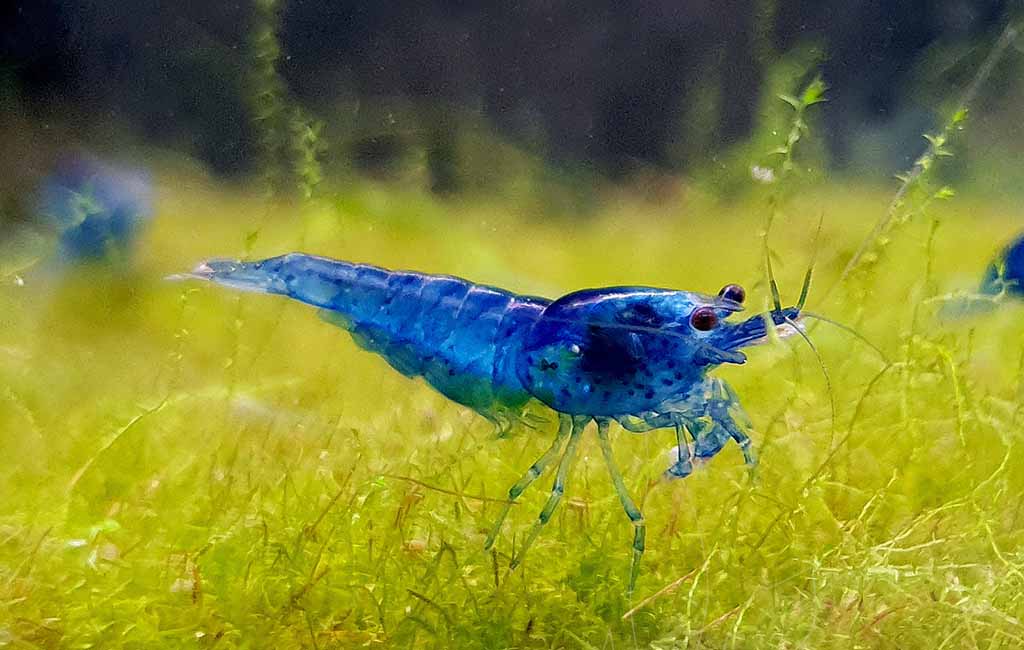
water do shrimp live in
What Water Is the Best for Aquarium Shrimp to Live In?
If you’re aiming to create the best environment for your shrimp, then you must understand the ideal water parameters for shrimp. Different species of shrimp prefer different conditions. For example:
Neocaridina (e.g., Cherry Shrimp)
- pH: 5–8.0
- GH: 6–8
- KH: 3–6
- TDS (Total Dissolved Solids): 180–250 ppm
- Temperature: 68–78°F (20–26°C)
Caridina (e.g., Crystal Red/Black Shrimp, Taiwan Bee Shrimp):
- pH: 5–6.8
- GH: 4–6
- KH: 0–2
- TDS: 100–150 ppm
- Temperature: 68–74°F (20–23°C)
These shrimp are more delicate than Neocaridina and often require remineralized RO water to meet their specific needs.
Best Water Source for Shrimp Tanks:
- RO/DI Water (Reverse Osmosis/Deionized): Purified and stripped of all minerals. It must be remineralized to reach proper GH/KH levels.
- Distilled Water: Similar to RO, it also requires remineralization.
- Tap Water: Use only if parameters align with shrimp needs, and it’s free from harmful substances (must be treated with a dechlorinator).
- Spring Water: Can be used in some cases, but needs to be tested for consistency and safety.
For long-term shrimp keeping and breeding, RO water with shrimp-specific remineralizers (such as Salty Shrimp GH+ or GH/KH+) is considered the best water for shrimp.
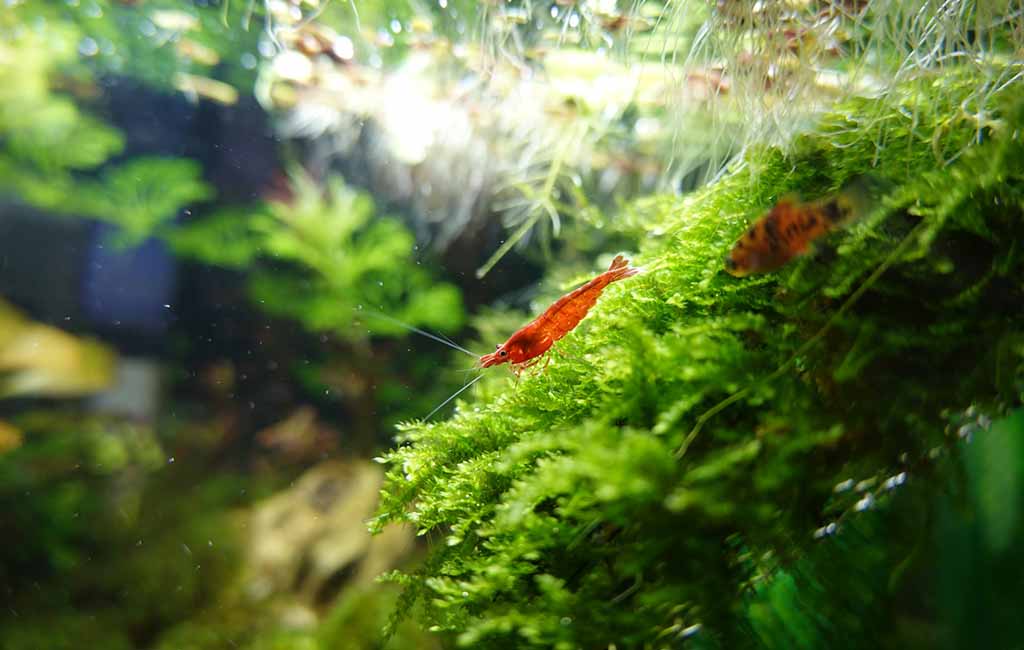
Water parameters for shrimp
The Most Controlled Way to Lower GH or KH for a Shrimp Tank
Sometimes your tap water may be too hard (GH/KH too high), and you’ll need to adjust it for a shrimp-safe environment. Here’s how to safely lower GH or KH in a shrimp tank:
- Use RO or Distilled Water
Reverse osmosis (RO) or distilled water is free of minerals and provides a neutral base. This allows you to precisely control your shrimp tank’s water chemistry by adding only what your shrimp need. It’s the most consistent and controlled method, especially for breeders or those keeping delicate species like Caridina. - Peat Moss or Almond Leaves
These natural additives release tannins and organic acids that gradually lower KH and pH, creating a softer, slightly acidic environment. This method mimics the natural blackwater habitats of some shrimp species and also has antibacterial properties, which can help prevent certain shrimp diseases. For best results, use a mesh bag to contain the peat and avoid clouding the water. - Avoid Crushed Coral or Limestone Decorations
These materials slowly release calcium and other minerals, raising GH and KH over time. Instead, opt for inert substrates or shrimp-specific soil, which not only buffer pH but also help maintain soft, slightly acidic water. These soils also promote biofilm growth, a natural food source for shrimp. - Use Shrimp-Specific Remineralizing Salts
Products like Salty Shrimp GH+ or GH/KH+ allow you to raise GH (or both GH and KH) to precise levels. This is essential when using RO or distilled water, as shrimp still need essential minerals for molting and shell development. For Neocaridina, aim for GH 6–8 and KH 3–6; for Caridina, GH 4–6 and KH 0–2 are ideal.
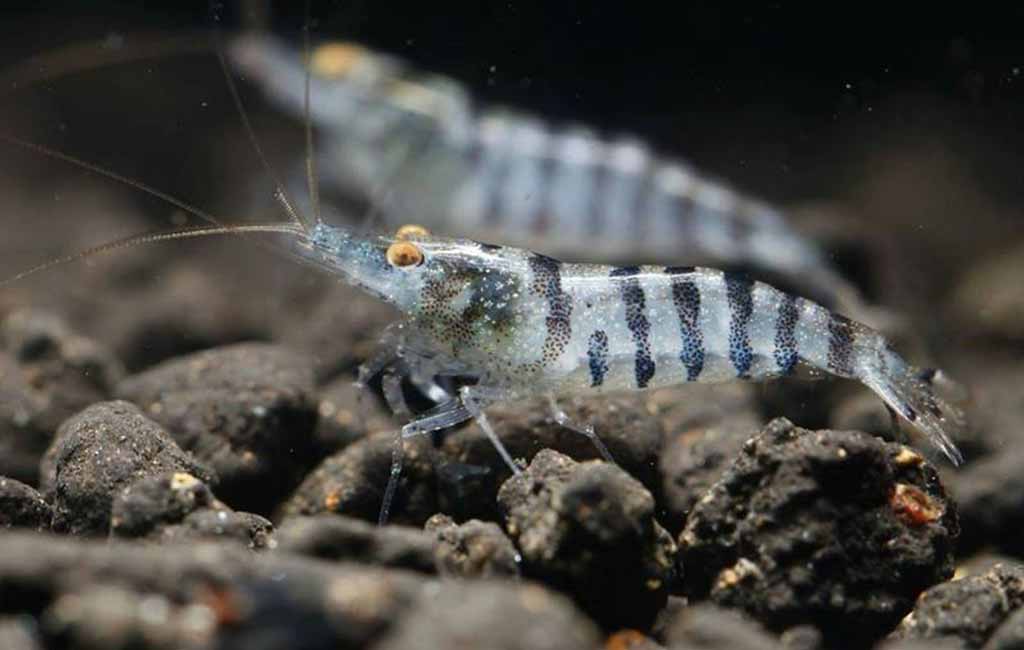
best water for shrimp
How to Prepare Water for a Shrimp Tank
Getting the water right is one thing—preparing it and setting up the tank is another crucial step that directly impacts shrimp health and longevity. Here’s a detailed, step-by-step guide to ensure your shrimp tank is fully optimized before adding any livestock.
1. Start with the Right Water
Use RO (Reverse Osmosis) or distilled water as your base to eliminate unwanted minerals, heavy metals, and contaminants. These water sources give you full control over the water parameters for shrimp.
Then, remineralize the water using high-quality shrimp-specific salts, like Salty Shrimp GH+ (for Caridina) or GH/KH+ (for Neocaridina). These products help you achieve ideal parameters:
- GH (General Hardness): 4–6 dGH for Caridina, 6–8 dGH for Neocaridina
- KH (Carbonate Hardness): 0–2 dKH for Caridina, 3–5 dKH for Neocaridina
- TDS (Total Dissolved Solids): 100–150 ppm for Caridina, 180–250 ppm for Neocaridina
- pH: 6.0–6.8 for Caridina, 6.8–7.4 for Neocaridina
Always test your water before adding it to the tank using reliable test kits. A TDS pen is also essential for accurate measurement of mineral content.
2. Cycle the Tank Properly
Shrimp cannot tolerate ammonia or nitrites, even in small amounts. An uncycled tank can be deadly. To properly cycle your shrimp tank:
- Install a gentle filter, such as a double sponge filter, connected to an air pump. It provides both mechanical and biological filtration while being safe for baby shrimp.
- Add a source of ammonia to feed beneficial bacteria. You can use a pinch of fish food daily or pure household ammonia (ensure it has no additives like surfactants).
- Seed your tank with established filter media, sponge, or substrate from a mature aquarium to jump-start the nitrogen cycle.
- Monitor ammonia, nitrite, and nitrate levels using liquid test kits. The cycle is complete when:
- Ammonia = 0 ppm
- Nitrite = 0 ppm
- Nitrate = present (but below 20 ppm is ideal for shrimp)
Cycling usually takes 4–6 weeks. Be patient—it’s worth the wait.
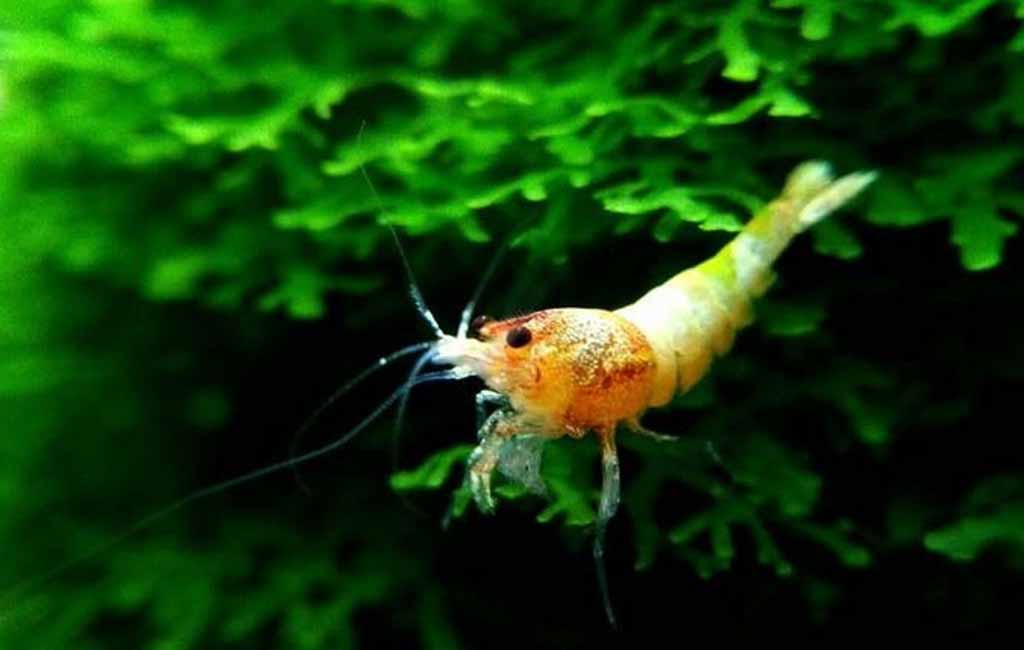
Prepare water for a shrimp tank
3. Add Live Plants and Shrimp-Safe Décor
Live plants not only help maintain water quality but also provide biofilm as food for shrimp and their babies.
Recommended plants:
- Mosses(Java Moss, Christmas Moss): Great for shrimp fry to hide and feed
- Anubias & Bucephalandra: Low light, hardy, and shrimp-safe
- Floating plants(like Frogbit or Water Lettuce): Absorb excess nitrates and offer shade
- Substrate: Use a buffering substrate for Caridina shrimp to keep pH stable around 6.0–6.5
Avoid sharp or rough decor that could harm shrimp. Use shrimp caves, cholla wood, and Indian almond leaves for both hiding places and added tannins.
4. Monitor Water Parameters Consistently
Even after setup and cycling, stability is key. Use test kits weekly to track:
- pH– Maintain the appropriate range for your shrimp species
- GH/KH– Ensures proper molting and overall health.
- TDS keeps mineral levels in check
- Ammonia/Nitrite/Nitrate– Even trace amounts of ammonia or nitrites can be lethal
- Temperature– 70–74°F (21–23°C) for Caridina, 72–78°F (22–26°C) for Neocaridina
Use a digital thermometer and auto-heater if needed, depending on the room temperature.
5. Water Changes and Maintenance
- Do 10–20% water changes weekly using the same remineralized water to avoid sudden parameter shifts.
- Drip acclimate new water slowly to avoid shocking the shrimp. A simple airline hose drip method over 1–2 hours works great.
- Clean the sponge filter and remove any visible waste during water changes, but avoid deep cleaning the substrate to preserve beneficial bacteria.
Final Insights
Understanding what kind of water shrimp live in is vital for their health and longevity. The best water for shrimp isn’t just clean—it must have specific mineral content, hardness, and pH levels depending on the shrimp species.
While tap water can be used in some cases (with proper treatment), the safest and most controlled option is RO water with shrimp-specific remineralizers. This allows shrimp keepers to tailor the water parameters for shrimp precisely and avoid swings that could stress or kill a colony.
Preparing the water correctly, cycling your tank, and keeping everything stable are the keys to success. Whether you’re raising colorful Cherry Shrimp or delicate Taiwan Bees, the water you provide is the foundation of their world.
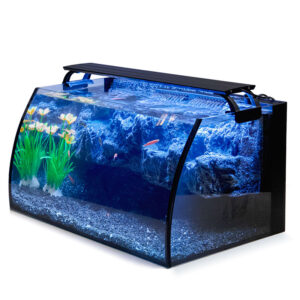
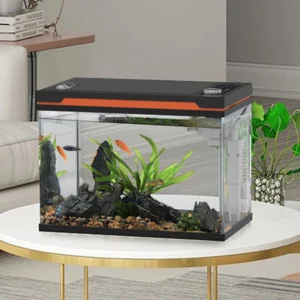
Leave a comment